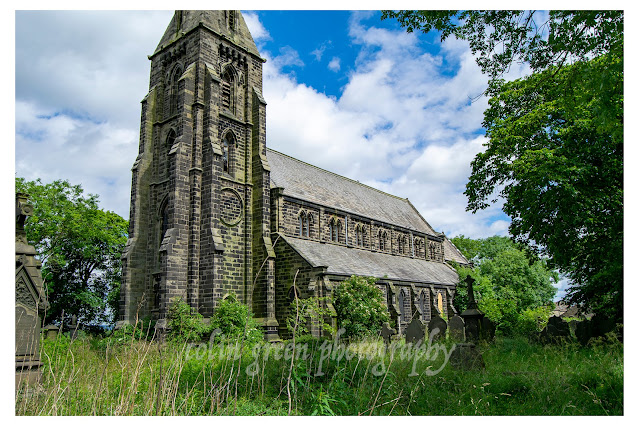North Dean Woods, nestled on the fringes of Greetland within the Calderdale region, offer a captivating glimpse into the evolution of British woodland. Stretching from the meandering River Calder's valley floor to the elevated terrain beneath Norland, these woods are a living tapestry woven with centuries of ecological and human history. On a crisp December day in 2017, following a delicate snowfall of a few inches, I embarked on a journey through this enchanting landscape, capturing its serene beauty with my Nikon D3300. This blog post delves into the nuances of this walk, reflecting on the historical significance and natural beauty encountered along the way.
A Journey Through Time and Terrain:
My exploration began at Wilson Bridge, a crossing point adjacent to the venerable St. Stephen's Church. This starting point itself speaks volumes about the intertwined relationship between community and nature in this region. The church, a silent sentinel, has witnessed the woods' transformation over generations.
The ascent through the woods along North Dean Road revealed the characteristic features of a typical British woodland. This landscape is a mosaic of deciduous trees, likely including oak, beech, and ash, reflecting the region's temperate climate and fertile soils. The recent snowfall accentuated the skeletal forms of these trees, highlighting their intricate branching patterns and the stark contrast between the white blanket and the dark, textured bark.
Ecological Insights:
North Dean Woods, like many similar woodlands, are a vital habitat for a diverse range of flora and fauna. The understory, though obscured by the snow, would typically host a variety of shrubs, ferns, and wildflowers, contributing to the woodland's biodiversity. The interplay of light and shadow, even under the overcast winter sky, reveals the complex ecological dynamics at play.
The proximity to the River Calder is a crucial factor in the woodland's ecosystem. The river's influence extends beyond its immediate banks, providing moisture and nutrients that support the surrounding vegetation. Furthermore, the river corridor acts as a vital pathway for wildlife, connecting fragmented habitats and facilitating species movement.
Historical Footprints:
The paths winding through North Dean Woods are not merely routes for recreational walkers; they are historical arteries that have connected communities for centuries. These pathways, often following ancient routes, reflect the human interaction with the landscape. The presence of features like Wilson Bridge and Donkey Bridge, near Pickwood Lane, hints at the historical significance of these routes for trade, travel, and local commerce.
The gradual transition from the valley floor to the higher elevations mirrors the historical land use patterns in the region. The lower slopes, closer to the river, would have been traditionally used for agriculture and grazing, while the higher elevations, more challenging to cultivate, would have remained predominantly woodland. This stratification of land use reflects the adaptive strategies of past communities in utilizing the available resources.
Winter's Silent Beauty:
The snowfall transformed the woods into a tranquil winter wonderland. The muffled sounds, the pristine white surfaces, and the delicate patterns created by the snow on the branches and leaves created a sense of serenity and isolation. The frozen landscape offered a unique perspective on the woodland's structure and form, revealing details that are often obscured by the lush foliage of summer.
The photographs captured on that day, serve as a visual record of this ephemeral beauty. They document the interplay of light and shadow, the textures of the bark and snow, and the overall atmosphere of the winter woodland.
Conclusion:
A walk through North Dean Woods is more than just a pleasant stroll; it's a journey through time and nature. The woodland's historical significance, ecological diversity, and serene beauty make it a valuable asset to the Calderdale region. The winter landscape, with its blanket of snow, offers a unique perspective on this timeless environment, revealing the enduring connection between humans and the natural world. These woods, like countless others across Britain, are a testament to the enduring legacy of our natural heritage.
 |
| Taken at the bottom of North Dean Road, I had just crossed the River Calder via Wilson Bridge and passed St Stephens Church. |
 |
| The copley valley and railway viaducts viewed from North Dean |
 |
| This lane looks up towards Pickwood Scar, Norland. I'd not long since passed over Donkey Bridge |







































































